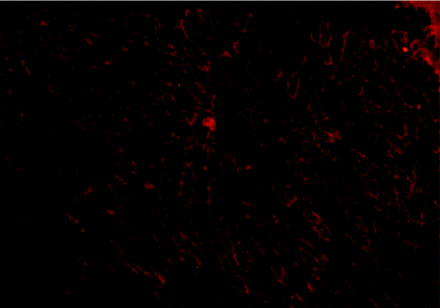Systemic Administration of Naked DNA: Gene Transfer to Skeletal Muscle
- 633 Salk Hall, Center for Pharmacogenetics School of Pharmacy University of Pittsburgh Pittsburgh, Pa 15213
- Address correspondence to LH. E-mail Huangl{at}msx.upmc.edu; fax 412-648-1664.
Abstract
Skeletal muscle is a promising target tissue for the gene therapy of both muscle and non-muscle disorders. Gene transfer into muscle tissue can produce a variety of physiologically active proteins and may ultimately be applied to the treatment of many diseases. A variety of methods have been studied to transfer genes into skeletal muscle, including viral and non-viral vectors. In this review, we discuss recent developments in the non-viral delivery of genes to muscles.

The systemic delivery of naked DNA to within diseased organs offers both advantages and challenges for gene therapy. The diaphragm
tissue shown above comes from mutant (mdx) mice that are deficient in dystrophin. Subsequent to receiving therapeutic DNA via intravascular injection, however, the
mice express dystrophin (immunostained red) beneath cell membranes.
- © American Society for Pharmacology and Experimental Theraputics 2001



